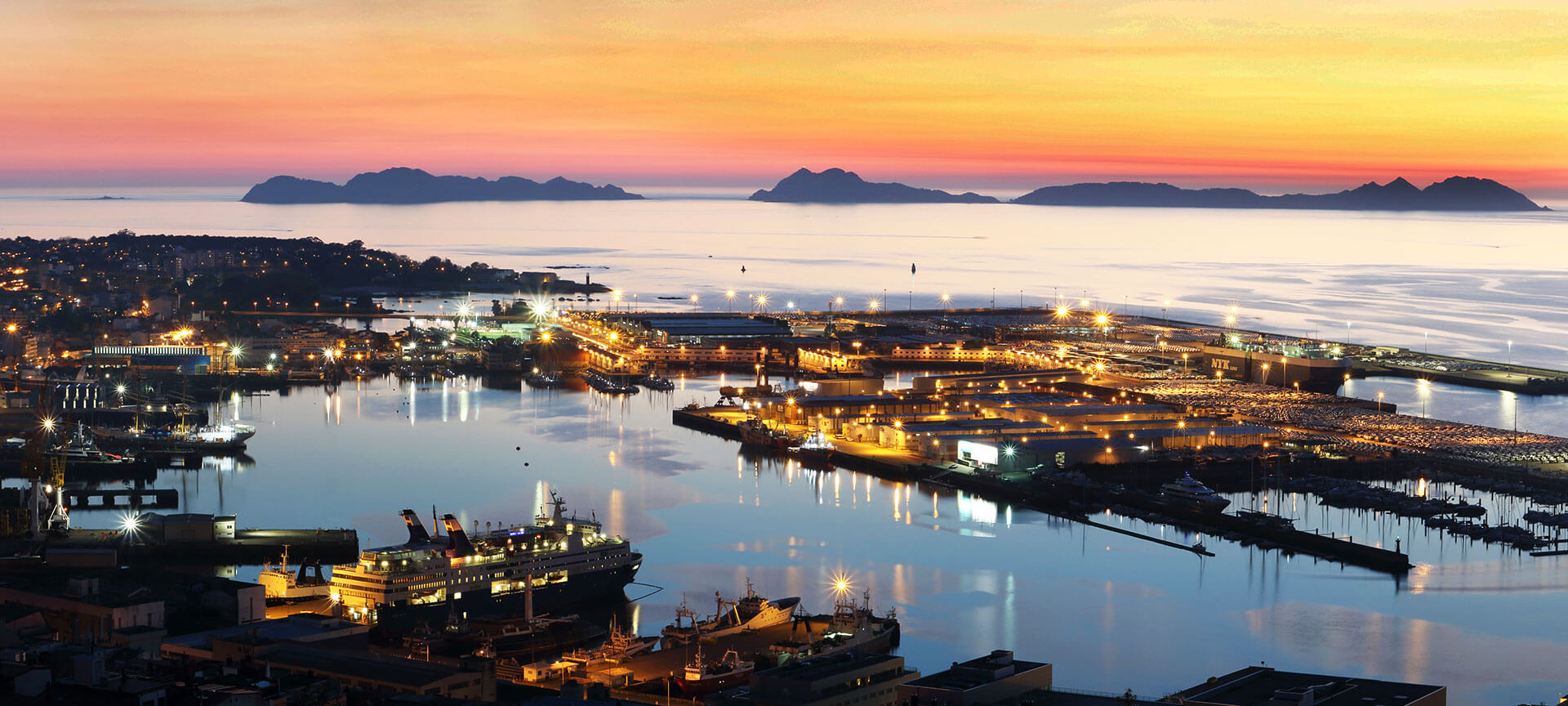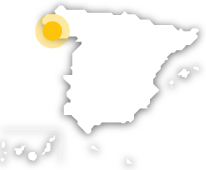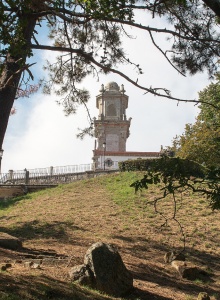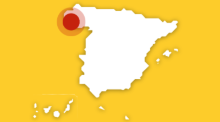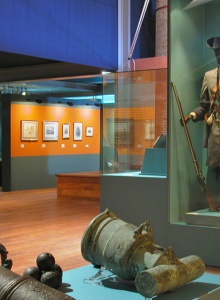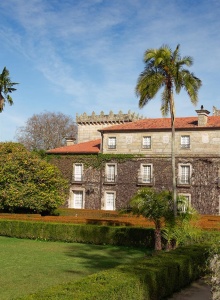In the Galician province of Pontevedra, situated on the shores of the Atlantic Ocean, lies the city that lends its name to the southernmost estuary of the Rías Baixas: Vigo.
Its fishing origin has left an historic quarter with a strong maritime flavour, which contrasts with the modern facilities of its marinas. This city is an excellent base from which to visit the towns and villages along the Vigo estuary and the Cíes Isles that form part of the National Park of the Atlantic Islands. The cuisine of the Galician coast, based on fish and seafood, is an added incentive for visiting this region.
The port of Vigo, one of the finest natural ports in the world, was the origin of this city fringed by mountains. Its maritime qualities, already exploited in Roman times, have given rise to the present-day marinas and the transatlantic harbour, as well as to the fishing and canning industries. All of this has contributed to the urban development of Vigo, which includes the traditional port area and boasts major historic buildings and wide tree-lined avenues.Cidade VellaThe historic quarter, the so-called Cidade Vella, is articulated around the old maritime quarter of O Berbés, near the port. Situated in this quarter, which has Tourist-Historical Interest status, are the arcades around the Plaza de la Constitución, fishing streets and emblazoned houses. One of the main features of this network of tiny streets, in which most façades have glass-encased miradors, is the Collegiate Church of Santa María, the Procathedral of Vigo-Tui. Neoclassical in style, this edifice is constructed on the remains of a Gothic church burned down by the pirate Francis Drake. Also worthy of visit in this area is the do Pedra market, a fascinating place for buying and sampling Galician oysters. The newer part of Vigo occupies a triangle formed by the Puerta del Sol, Colón and Urzáiz. Lining the wide avenues are notable buildings, one such being the García Barbón Cultural Centre, designed by Antonio Palacios. The modern sector contains one of the best miradors over the Vigo estuary, the Monte do Castro mount. Located amidst the forests and leisure areas are the remains of the hill-forts that constituted the early settlement, as well as the ruins of the 10th-century O Penso Castle, the layout of which was used for the construction of the 17th-century Tower Castle still standing.The large Municipal Park of Castrelos is located on what once was the estate of the Quiñones de León country house. Amidst Neoclassical gardens and ancient trees, the Municipal Park contains an interesting collection of Roman steles, furniture and statuary, and an art gallery exhibiting European works from the Baroque period as well modern works by Galician artists. The park also boasts an open-air auditorium where key music events are held.The mounts of A Madroa and A Guía that lay around the city of Vigo provide magnificent viewpoints from which to admire the surrounding landscape. Also worthy of a visit is the Zoo, situated on Mount A Madroa, whilst the Municipal Park also contains the hermitage of Nosa Señora da Guía.The Galician Museum of the Sea, situated at the Punta do Muiño in the parish of Alcabre, comprises buildings, gardens, a square and a wharf. The work of Aldo Rossi and César Portella, this complex houses various items related to the sea. The Vigo EstuaryThe city of Vigo is easily accessible thanks to the motorway and airport, and there are also excellent nautical facilities and a golf course in the vicinity. At its maritime station it is possible to purchase passages to the coastal towns of Cangas and Moaña on the other side of the estuary, and even to the Cíes Isles. Part of the National Park of the Atlantic Islands, the sheer cliffs and dunes of these isles are the home of thousands of migratory birds. The route along the Vigo Estuary affords the contemplation of historic country houses such as Baiona. Its parador, an incomparable viewpoint over the Atlantic, combines elements of the past, such as the medieval fortress, with vestiges of Galician stately architecture. The restaurant serves both traditional and highly imaginative dishes made with products from the region, such as sea bass with razor-shells in turnip green sauce. The beaches of Nigrán, the oysters of Arcade and, further inland, the Mondariz Spa, are just some of the area's numerous attractions.Another attraction of the province of Pontevedra is its capital city, which is situated on the estuary of the same name. The network of streets and squares that make up its historic quarter contain major civic and religious buildings. The palace of the Counts of Maceda houses the city's parador, which provides privileged accommodation for over-night stays. Another of the major ports along the Pontevedra Estuary is Marín, famous for the Naval Military School. Other places of interest, and also boasting excellent beaches, are Combarro, Sanxenxo and Portonovo; so too, the Ons Isles, which close the estuary and form part of the Galician National Park.The Arousa Estuary leads to Villagarcía de Arousa, O Grove and the island of A Toxa, which boasts one of Galicia's most impressive spas. Visitors to Cambados can stay at its parador, housed in the former Pazo de Batán country house dating back to the 17th century. Towards the south of the province, almost on the Portuguese border, the itinerary continues with the Monte Aloia Nature Reserve, which contains highly interesting archaeological remains; the historic city of Tui, the point of entry into Spain for the Northern Road of the "ruta jacobea" pilgrimage to Santiago de Compostela, where the parador is situated amidst mountains and rivers; and A Guarda at the mouth of the river Miño, where the hill-fort of the Monte Santa Tegra is a worthwhile visit.All of these places offer the opportunity to sample the delicious cuisine that Galician tradition has preserved and that is now exploited by the most innovative chefs. The Rías Baixas provide hake, turbot and sea bass, not to mention a whole range of shellfish including goose barnacles, oysters, clams, mussels and cockles. These raw materials are served in stews and pies, on their own or combined with other flavours and textures. Veal and Galician potatoes, known as "cachelos", both have Label Guarantee status and are used in the tastiest of dishes. Wines with the Rías Baixas Label Guarantee make an excellent accompaniment to any of these dishes. Local cuisine sampling can be rounded off by a slice of Santiago cake (an almond-based sponge) and a "queimada", a traditional beverage obtained by flaming the local eau-de-vie.
